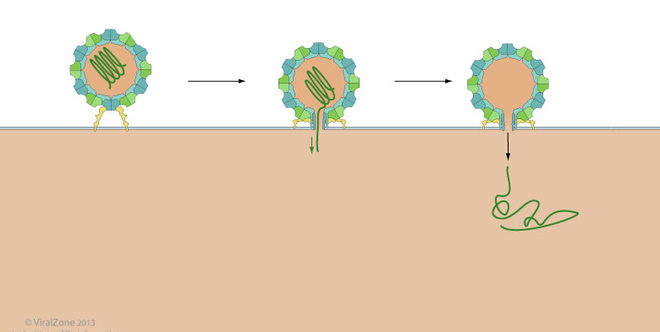Sputnik - the virus shocked the entire world of scientific research by signing up ... another virus
At the end of the 19th century, humanity first discovered a new form of virus named life. Since then, these small entities have taken us from this surprise to another surprise, because none of them are the same.
The uniqueness of the virus first comes from a 1-0-2 structure, and then the "lifestyle" of none of them.
Unlike normal living organisms, the virus does not need thousands of organelles, hundreds of complex molecular machines to function. They are just pieces of nucleic acid that are encased by a layer of capsid protein - too simple to perform any living function.
Yet, they still live.

To be able to metabolize and multiply, they are forced to parasitize other living things: from prokaryotes, tiny forms of fungi, . to large trees and animals, including human.
Only here, can the virus "borrow" the cell ribosomes to synthesize their own proteins, then multiply by the division of the cell.

How parasitic virus.
Thus with these characteristics, we all understand that the virus will never parasitize each other, because that will not bring any benefit. Viruses do not have ribosomes, cannot replicate themselves, so they need to have hosts to operate.
But 10 years ago, a virus broke that rule and made people once again scratch their heads. In 2008, the French team was first found in samples taken from a fountain in Paris: a virus is "sticking" to another virus.
They named it Sputnik - the beginning of a completely unfamiliar study.
Sputnik is about 50nm in diameter, and has about 18,000 pairs of nitrogen bases (while humans have about 3 billion pairs in DNA), parasites another virus of the Mimivirus strain.
 The black circle on the right is Sputnik.
The black circle on the right is Sputnik.
The Mimivirus is known to be one of the largest viruses, standing on par with some other prokaryotes. However, the size does not say anything. The virus is still a virus, still does not have enough biological apparatus, enzymes needed to replicate themselves. And this has puzzled scientists for a long time about the purpose of Sputnik.
As time went on, a lot of research was done and now, we can answer this question.

When observing parasitic Mimiviruses, it was found that they usually parasite on amoeba - a true single-celled species. And instead of creating other Mimiviruses, the amoeba produced a series of Sputnik viruses.
That means: Sputnik installs his gene into Mimivirus, the Mimivirus installs the same gene into the amoeba. And now the mechanism of Sputnik becomes completely reasonable.
But scientists still aspire to find the root cause of this action. What's "plugging in" another virus than directly parasitic on another creature?
No one is clear, but it will not be long until humanity submits the answer.
- Sputnik's 60th Anniversary 1: The glorious past of the Russians
- Decoding the whole gene, will people be immortal?
- China is about to lead the world in scientific research
- New virus variants can delete mankind
- Scientific research: People with brown eyes often lack luck
- Awakening the virus once existed 30,000 years ago
- Can cure 'old disease'
- WHO: The latest research on Zika virus is very worrying
- HIV virus is no longer as dangerous as before
- Need to review the Nobel Prize?
- Published the first study material on the new influenza virus
- Vietnam-France strengthens scientific and technical cooperation
 Why do potatoes have eyes?
Why do potatoes have eyes? 'Tragedy' the world's largest carnivorous life: Death becomes ... public toilet
'Tragedy' the world's largest carnivorous life: Death becomes ... public toilet Tomatoes were once considered 'poisonous' for 200 years
Tomatoes were once considered 'poisonous' for 200 years Detecting microscopic parasites on human face
Detecting microscopic parasites on human face